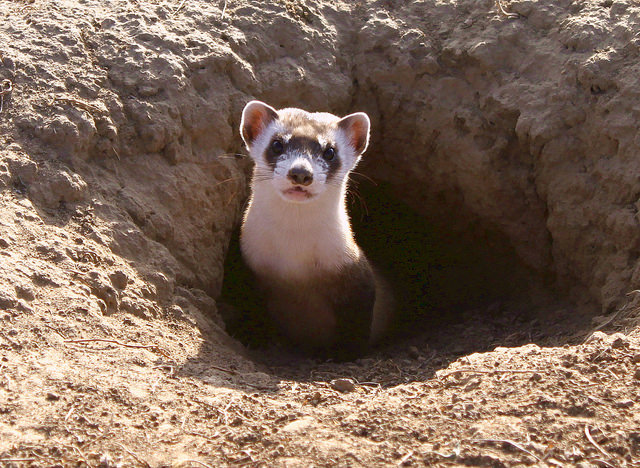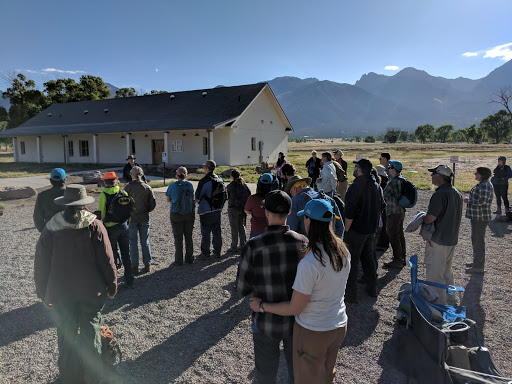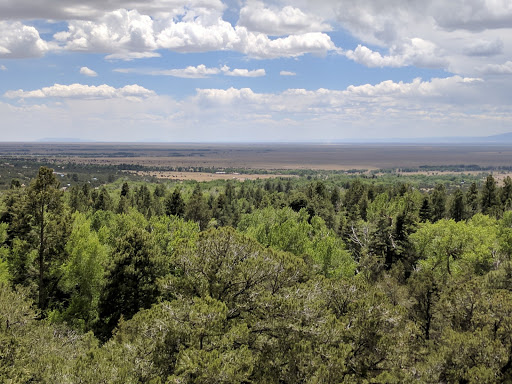Rights of Nature Takes Hold in Crestone, Colorado
From Creative Commons
On July 9, 2018, the Town of Crestone’s Board of Trustees unanimously approved a resolution recognizing the rights of nature. With this bold decision, Crestone joined the dozens of communities, cities, nations, and indigenous peoples across the world who recognize nature’s inherent rights.
This historic achievement was the result of a collaborative effort by Crestone’s mayor, government, local experts, and, above all, the community, which has a fervent desire to live in harmony with nature.
About Crestone
Crestone is a vibrant town located in south-central Colorado. While Crestone has only about 150 residents, over 2,000 people live in the greater Crestone-Baca Grande area. Crestone is a spiritual mecca, home to 23 spiritual centers representing Hinduism, Buddhism, Christianity, Native American traditions, and many other belief systems.
But Crestone wasn’t always this way. In the early 1900s, it was a booming gold mining town. But as with many mining booms, it was relatively short lived, and by the late 1940s the frenzy had died down.
The area underwent a major change in 1978 when Maurice Strong – a Canadian businessman and UN diplomat – came to the region and, like many, fell in love with its magnificent wilderness. He purchased a large swathe of land and came up with an unusual idea: to donate land to any spiritual institution that would open up a center.
Soon, a Hindu temple, a Carmelite monastery, a Tibetan Buddhist center, a Zen center, and many others opened their doors. Crestone’s many spiritual centers exist in harmony with each other and commonly incorporate respect for nature into their teachings.
The Nature of the San Luis Valley
Crestone is located in an area of vast natural beauty. The town is tucked away along the rugged Sangre de Cristo Mountains, home to beautiful alpine lakes and diverse wildlife. West of Crestone are another mountain range: the San Juans.
Together, these two mountain ranges enclose two sides of the San Luis Valley –the largest alpine valley in the world at 9,000 square miles, about the size of Connecticut. The Valley supports thriving ecosystems and features a giant confined aquifer that gives life to the region. Some estimate that the aquifer contains 200 times the Colorado River’s annual flow.
Several rare, threatened, and endangered species call the San Luis Valley home. These include the Gunnison Sage grouse, Rio Grande cutthroat trout, black-footed ferret, Canada lynx, Yellow-billed cuckoo, and the southwest willow flycatcher. Other local wildlife includes elk and mule deer, the sage thrasher, and the Brewer’s sparrow.
Black Footed Ferret from Creative Commons
Behind the Scenes of the Rights of Nature Resolution
The rights of nature movement in Crestone began with initial conversations between Crestone’s Mayor, Kairina Danforth, and Myra L. Jackson, a decades-long Crestone visitor who is also Senior Advisor on Whole Earth Civics for Geoversiv Foundation and an expert on rights of nature. Both share a deep love for Crestone and its natural environment.
After additional local leaders expressed interest, Crestone invited Earth Law Center (ELC) to speak at a local rights of nature event. One of ELC’s primary goals is to connect and catalyze local partnerships towards advancing the rights of nature, so we were thrilled to participate. ELC has a regional office in Boulder, Colorado, about four hours from Crestone.
Crestone hosted the rights of nature event at Colorado College Baca Campus on May 18, 2018. Thanks in large part to outreach by the local newspaper, The Crestone Eagle, over 50 community members were in attendance. These included highly respected environmental voices, such as John P. Milton, the pioneering ecologist and spiritual leader who once helped write several foundational U.S. environmental laws.
After ELC presented and held a Q&A, over a dozen community members stayed late to discuss their thoughts on protecting the San Luis Valley. Their deep and genuine interest in protecting nature ultimately fueled the rights of nature resolution that passed just weeks later.
Sample PowerPoint slide from ELC’s presentation
As an aside, the same weekend as its presentation to Crestone, ELC was honored to participate in a local trail building project. ELC’s Directing Attorney, Grant Wilson, teamed up with local outdoors enthusiasts to complete a new trail at the edge of Crestone, giving the community greater access to the outdoors.
Trail-building orientation with local volunteers.
Overall, the community response to rights of nature was very positive. And so several weeks later, Mayor Danforth consulted a team of rights of nature experts to give input on a draft resolution. These experts included Myra L. Jackson, Grant Wilson of ELC, and Marsha Moutrie, the attorney who led the drafting of Santa Monica’s own rights of nature law – the Santa Monica Sustainability Rights Ordinance.
After finalizing the text, Mayor Danforth introduced the resolution to the Town of Crestone’s Board of Trustees. A spirited conversation ensued, cumulating in a unanimous vote to approve the resolution. It was official: Crestone was now amongst the growing number of governments worldwide that recognize nature’s inherent rights.
What Does the Resolution Say?
Considering the town’s spiritual and ecological splendor, it comes as no surprise that Crestone’s rights of nature resolution itself is inspiring and full of life. For example, the resolution pays homage to the area’s history as a sacred place:
WHEREAS, special recognition of the primacy of this relationship existed in the region long before the town of Crestone was founded, when Native American tribes considered the area to be sacred land and journeyed here for rites of passage seeking insight and rejuvenation.
The resolution also recognizes the longstanding role of humans as environmental stewards:
WHEREAS, today, as in the past, visitors and residents alike receive nourishment, inner peace, and spiritual renewal from the region’s pristine sacred land, and town residents reciprocate these gifts by serving as stewards of the natural environment;
And crucially, the resolution makes a bold commitment to recognizing the rights of nature in Crestone:
…the Town of Crestone does officially recognize that nature, natural ecosystems, communities, and all species possess intrinsic and inalienable rights which must be effectuated to protect life on Earth.
The full resolution is available on Earth Law Center’s Crestone page. It makes an excellent read, particularly if you are interested in using it as a model to advance the rights of nature in your own community.
Next Steps
After recognizing the rights of nature, Crestone will now work to put this new resolution into practice. While it’s up to the town what to do, next steps could include new policies that implement nature’s rights, local sustainability programs, and potentially a legally-binding ordinance. Whatever they do, it will be certain to further Crestone’s commitment to protecting nature.
Additionally, ELC will use Crestone’s success as a model for other communities. For example, we are creating a community toolkit that includes case studies (such as Crestone), model language, and other tools to inspire the larger rights of nature movement. Myra L. Jackson and other leaders who made Crestone possible are joining us in this work. Together, we can advance a new legal paradigm that protects all life on Earth.
View of the San Luis Valley from Crestone, Colorado
How you can help
Sign up for the ELC monthly newsletter to stay informed
Join us and volunteer
Support us and donate
Or start a new initiative
1. http://www.slvec.org/projects/threatened-and-endangered-species





